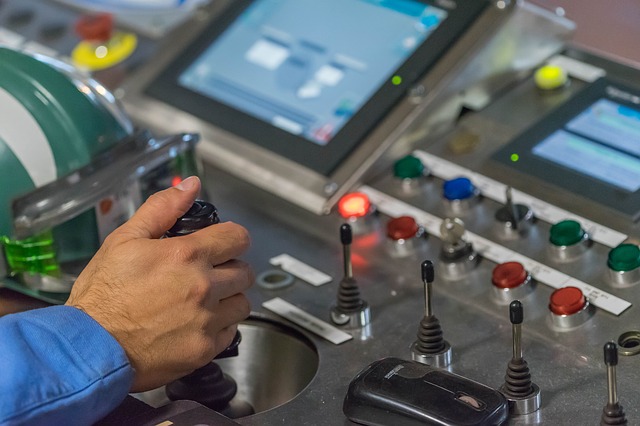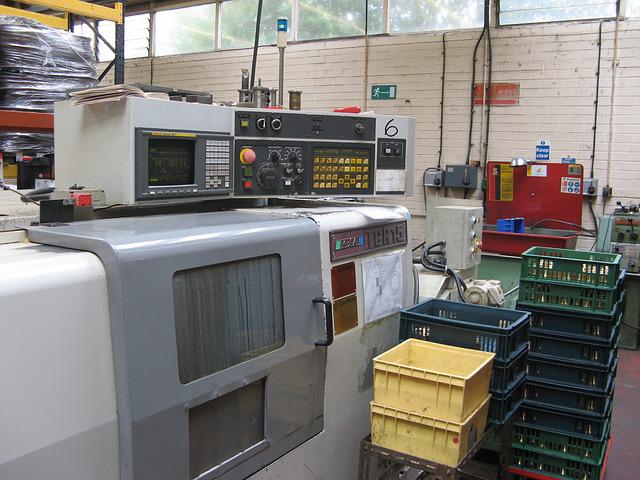The word automation can mean many different things to many different people. It can simply mean electronics by some, it can mean robotics, or it could mean a variety of other things in between. Being in the business of industrial automation, I believe the most fitting definition of automation is the ability to let machines perform the repetitious and mundane work that a person once had such that the person can perform jobs that require more intellect. A machine is programmed with a set of instructions such as move up, move down, close gripper, open gripper, etc. (I think you get the point) to perform a specific task or set of tasks without further human intervention.
Automation helps stretch your dollar by increasing productivity. Automated machines, which are driven by computers and/or controllers, tend to be incredibly accurate and can perform their work quickly. Once programmed properly, machines can perform a specific task over and over without ever getting tired. A machine uses various actuators and motors for movement while simultaneously using a multitude of sensors for positioning and detecting the environment around it. You can be assured that parts on a high-quality automation system will last a long time, especially if they have been well maintained. In the event that a component does fail, which does not happen very often on a high-quality automation system, rest assured that a system integrator such as myself will come out to fix the issue.
Automation also helps stretch your dollar by ensuring repeatability. A high level of repeatability provides a high level of quality control. If a task can be repeated over and over with minimal deviation, your output will be the same. Any deviations in output may cause issues down the line when you are trying to use the part in an assembly. If each part is manufactured exactly the same, then it is interchangeable because the dimensions and characteristics are exactly the same.
One project I did where automation stretched a client's dollar was an assembly system. The client had three technicians spread across a 20 square foot area performing an assembly using several manual presses and an alignment tool. Our mechanical engineers were able to design a system that implemented all of the actions that the three manual stations had into one machine that only took up a two foot by three-foot space. Where three technicians might have taken several minutes to perform an assembly, the automated press reduced the time to 90 seconds. The space that the manual assembly stations took up was quickly reassigned to accommodate other needs.
Automation stretches your dollar even more because machines do not take breaks. Once in a long time, the machine might fail; but the machine can be repaired fairly quickly.
There are two main caveats to automated machines is that they need to be well maintained. First, they need to be oiled, greased, readjusted, and inspected on a routine basis. This maintenance procedure is usually printed on a card and a person familiar with the machine operation is assigned to perform the routine maintenance.
The second caveat is that in the cases where the machine is only partially automated - meaning that an individual must be part of the process - the individual assigned to interface with the machine needs to be fully trained and follow the procedures with some level of discipline. Otherwise, the machine may prematurely wear out.
I have clients ask how they can justify adding an automation system to their operation. It is critically important for a company to determine if automation is the right move for them. Thus, I like to ask the following questions:
- How much space is the current process occupying?
- What is the volume of output?
- How many people are involved with the process?
- Are there heavy parts in the process?
- How fast do you need the process to be?
- Are there any hazards to be aware of?
Moving forward will depend on the answers. If the answers determine that automation is the answer, then I will determine a budget. Automation systems can be a high up-front cost. However, in business, we must look at Return on Investment. The automation machine is an investment for the company's future.
The way I look at it is multi-fold. Real-estate (floor space) cost money one way or another. If your company is using the space for one thing, it cannot use it for something entirely different. Also, the number of technicians working on the same assembly will be important. If a company has three technicians, paid $42,000 per year plus benefits working on an assembly throughout a year, that is $126,000 plus the cost of the benefits. If I can build you a machine for $150,000 that will work 20 years with minimal down time, can you imagine how much money you can save?
Automation can really save a company a lot of money. In fact, I would argue that it would be a money generator because your company will be able to output more product because of the automation.
The last caveat I want to state here is that your process is only as good as your weakest link. If half your process is automated and the other half is not, then your company will be facing a new problem associated with inventory. When you move to automation, it is best to automate as much as possible as soon as you are able.


